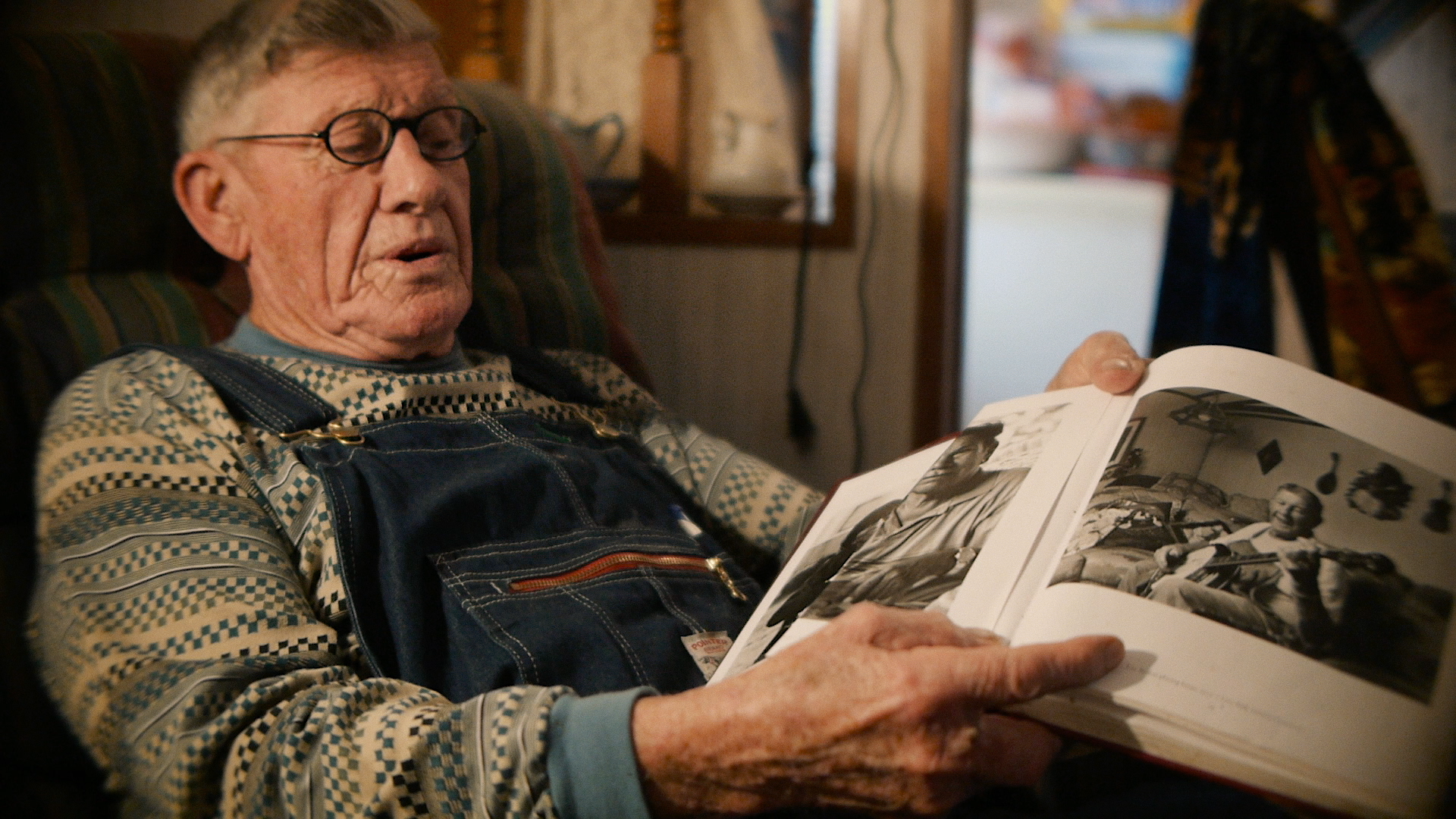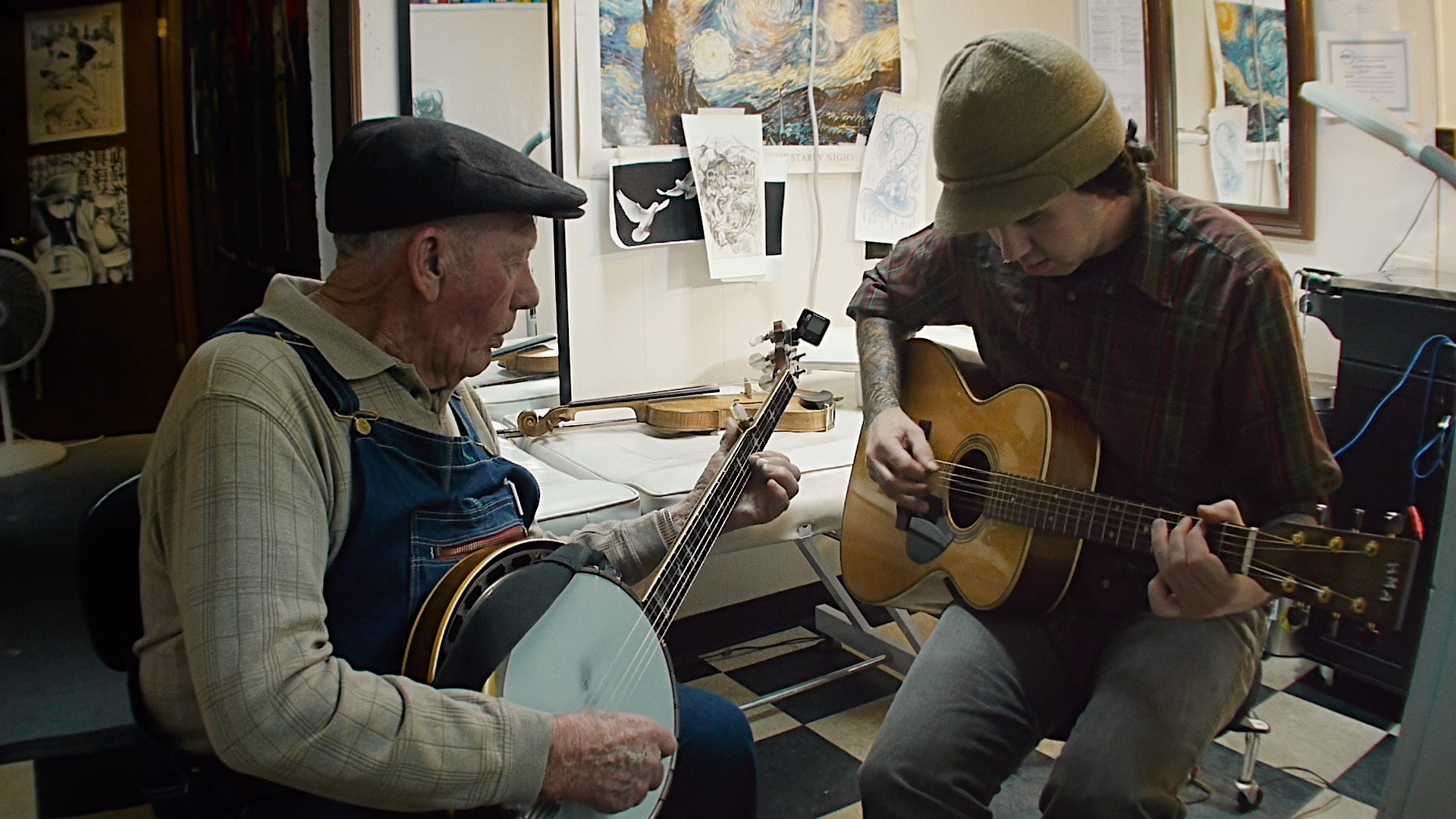Singularity & Tradition:
On Lee Sexton and the 5-String Banjo
“...a legend among those who love old time mountain music. Lee Sexton is one of the finest traditional old time banjo players in the country.” – David Holt, Public Radio International (PRI)
Currently in his 90s, Lee Sexton remains an active performer and teacher, and is a living link to the deep past of American music. His musical sensibility and technique span several centuries without invoking nostalgia, and can be heard on multiple releases on Smithsonian/Folkways and June Appal recordings. He learned to play banjo directly from family members Morgan Sexton and Roscoe Holcomb, themselves legends of old-time, pre-bluegrass music. His repertoire is eclectic and diverse: traditional songs traceable to the British Isles, songs particular to Appalachia, Tin Pan Alley and honky-tonk standards, and much of the bluegrass canon.
Lee developed and retains a distinctive, two-finger, thumb-lead banjo style that is unique in our time, shaped by a potent combination of deep musical roots and a series of work-related injuries to his right hand. In the mid-20th century, with the proliferation of electronic media and the advent of three-finger bluegrass styles, Lee’s generation of musicians almost entirely abandoned the older music for a more codified and commercially viable sound. But when Lee crushed his middle finger in the coal mines, it made the more popular three-finger style impossible for him to play. Years later, when a raccoon bit his thumb while he was working on the farm, Lee had to abandon the clawhammer/drop-thumb style he learned as a child, and relearn the songs exclusively in a two-finger style. In short, these physical limitations forced Lee to adapt, playing the newer, faster music through simpler and more direct means. Powered by only thumb and index finger, Lee Sexton’s present-day sound is as punctuated, proprietary, and aggressive as any to be found in traditional music. Or, as Lee says, "I wouldn't trade my old stuff for that Scruggs - you hear that everywhere you go."
Although well known and revered in the region and within banjo circles, Lee has largely existed outside of the commercial music business. Lee was recorded in 1959 for the landmark Smithsonian/Folkways release Mountain Music of Kentucky. He was a featured performer at the Smithsonian Folklife Festival in Washington D.C. and is a recipient of the Kentucky Governor's Award for Lifetime Achievement in the Arts. His music is also included on the recent Smithsonian/Folkways compilation Classic Banjo (2013). He appeared briefly in the film Coal Miner’s Daughter (1980), playing banjo during the square dance scene; he has performed at the local Carcassonne Square Dance for well over 40 years.
Linefork presents audiences with an experience of how the conditions of life and the particularities of place inform (and are reflected in) Lee’s music. Though now challenged by significant hearing loss and arthritis, Lee remains a vital and singular stylist, the last of his generation of eastern Kentucky banjo players. Linefork brings Mr. Sexton to a more proper place in the wider discourse of Appalachian culture and its significance to American musical heritage.



